I’ve been making scrambled eggs since the day I was born. I’ve had pretty good luck with them too. As a matter of fact, I can’t remember a time where I really screwed them up. I guess I was considered what some would call a happy boy.
The thing is, something strange happened about a month ago. I came across a breakfast recipe by Gordon Ramsay that included none other than scrambled eggs. I prepared the recipe, took some photos and posted my experience to this site. Upon eating what I had made, my socks were immediately knocked off. Gordon’s eggs were, by far, the best I’ve ever eaten. That really messed with my mind.
I thought about what had happened for a while and then decided to prepare Gordon’s recipe once again. I wanted to see if I would have the same good luck as I previously had. Well, wouldn’t you know it, I did. Unbelievably delicious. I decided that something was going on that I needed to look into.
I recently progressed into the Eggs course at America’s Test Kitchen where they cover everything about, yes, you guessed it – eggs. I’ve been learning quite a bit and thought I’d share some of it with you here.
Background on Eggs
There are a few interesting aspects regarding eggs. First, the whites and the yolk cook at two different temperatures. Egg whites set at 144 degrees and egg yolks set at 149 degrees. This is especially important to know when you fry and poach them.
Next, the proteins that eggs consist of are wound into tight bundles. If you apply heat to an egg, the proteins unwind from themselves and weave together with each other, creating a tender ingredient. If overheated, the proteins move from the previous, soft, stage I just described back into themselves and tighten up, squeezing any liquid they were holding right out. That’s why overcooked scrambled eggs tend to be hard and watery. I never knew that. There’s a lot more that has to do with eggs, but these facts are fairly relevant to this post.
Basically, much of the world has been overcooking eggs forever. I think we’ve become accustomed to it. Looking back on almost every single fried egg I ever cooked, I can tell you that it was done over medium-high heat. I was most likely impatient and I wanted to hear that crack and sizzle. I don’t know why.
Today’s post is going to be the first in the four part series. I’ll go over how to properly cook scrambled eggs today and then cover how to hard boil them, how to fry them and finally how to poach them. I think you’re going to be surprised at what you read. It’s very interesting.
Ingredients
Serves: 4
8 Large Eggs
2 Large Egg Yolks
1/4 Cup of Half-and-Half
3/8 Teaspoon Regular Table Salt
1/4 Teaspoon Black Pepper
1 Tablespoon Salted Butter
2 Tablespoons Fresh Chives, Parsley or Basil (Chopped)
or
1 Tablespoon Fresh Tarragon or Dill (Chopped)
Step-by-Step Instructions
As you can see, there aren’t many ingredients to challenge you with preparing this recipe. The challenge lies in your cooking methodology and process. The key to cooking successful scrambled eggs has to do with the temperature of the pan as well as the actions taken by you. I’ve found that the lower the temperature you finish cooking the eggs with, the better they come out. It’s the final glisten that matters most.
Prepare the Ingredients
When timing is of the essence, as it is with a recipe like this, it’s important to prepare all the necessary ingredients ahead of time. I’ll use this section to explain exactly what’s going on here.
The 8 large eggs is fairly explanatory. That’s primarily what we’ll be eating. By adding two separated egg yolks to the mix, we’ll be adding richness along with a slightly higher cooking temperature, which will help prevent overcooking and drying out.
The Test Kitchen found that using regular milk was too thin and created weeping eggs, while using cream was too thick and created eggs that were too dense. They concluded that half-and-half was just perfect.
These are the important aspects of the above ingredients. I’ll talk more about them as I progress through the steps below.
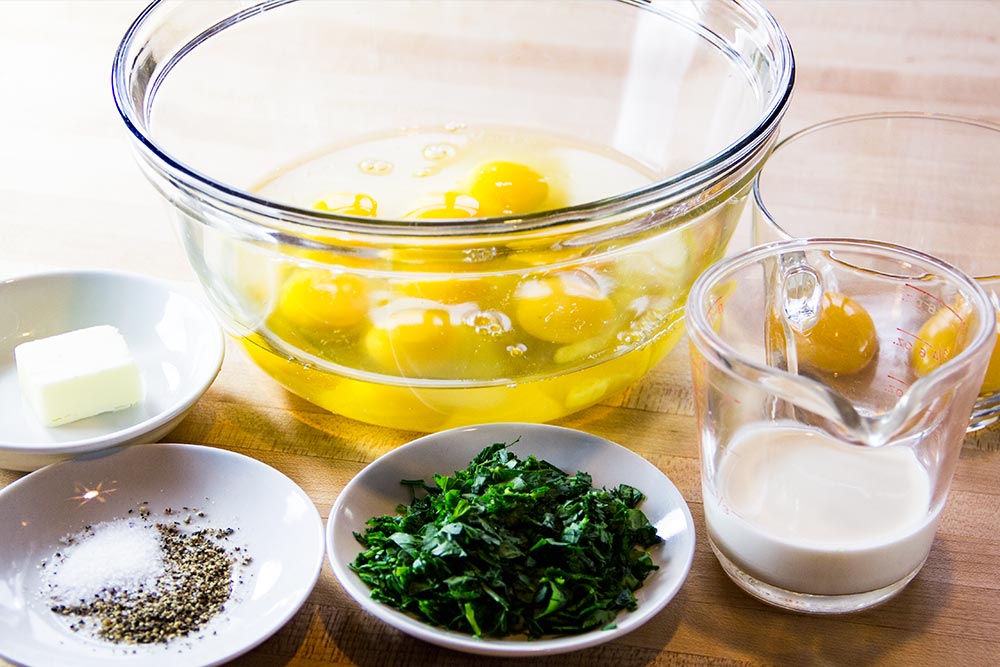
As you can see from the photo above, the two most time consuming ingredient preparations are the chopping of the parsley and the separating of the egg yolks.
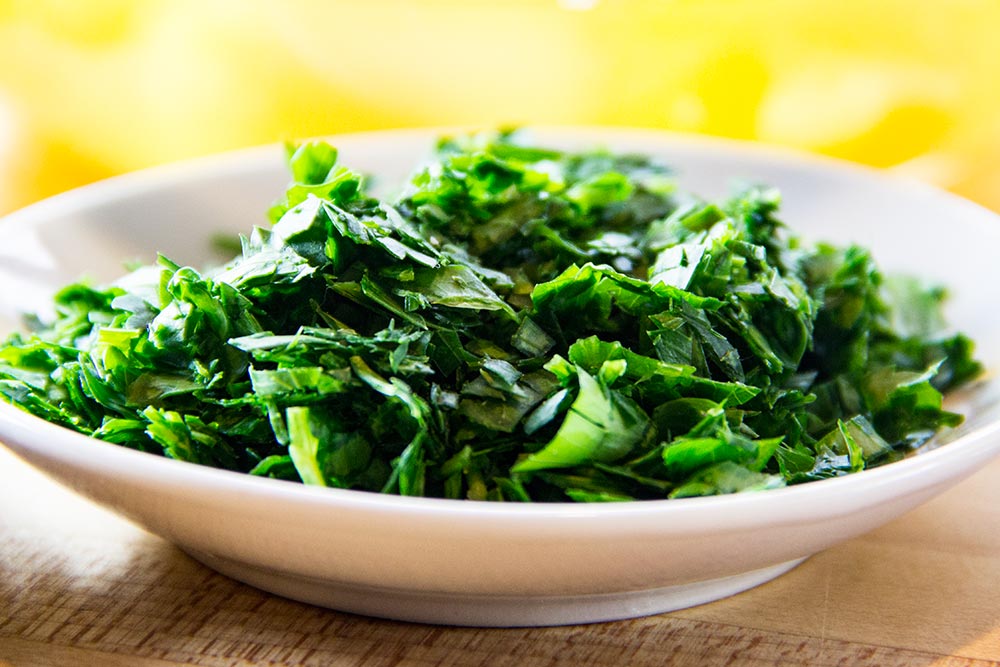
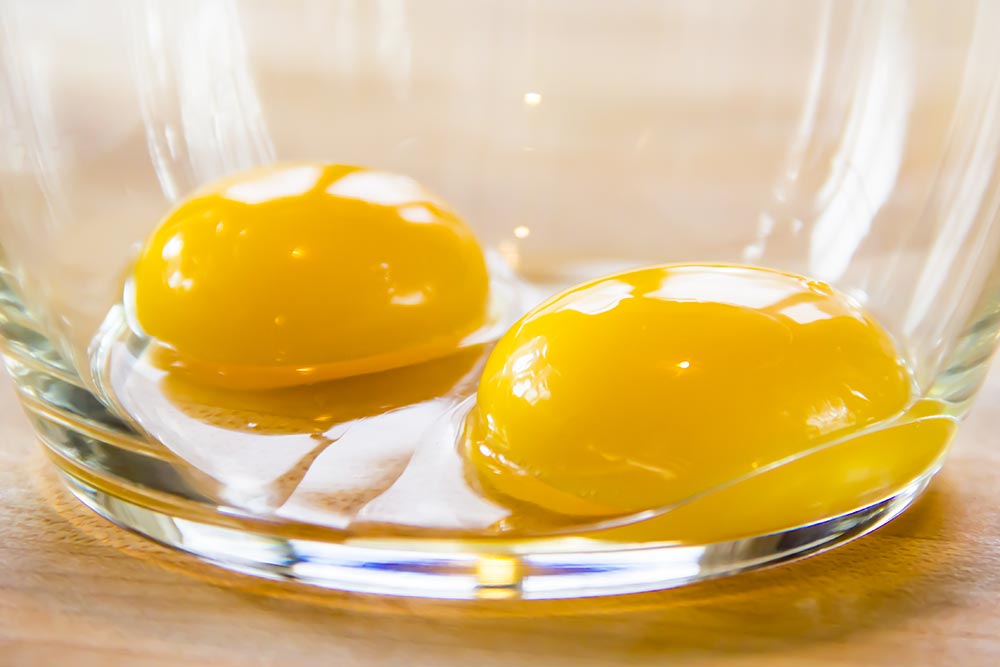
Add Ingredients to Egg Bowl
At this point, after everything is prepared, go ahead and add the 2 egg yolks, the half-and-half and the salt and pepper to the larger egg bowl.
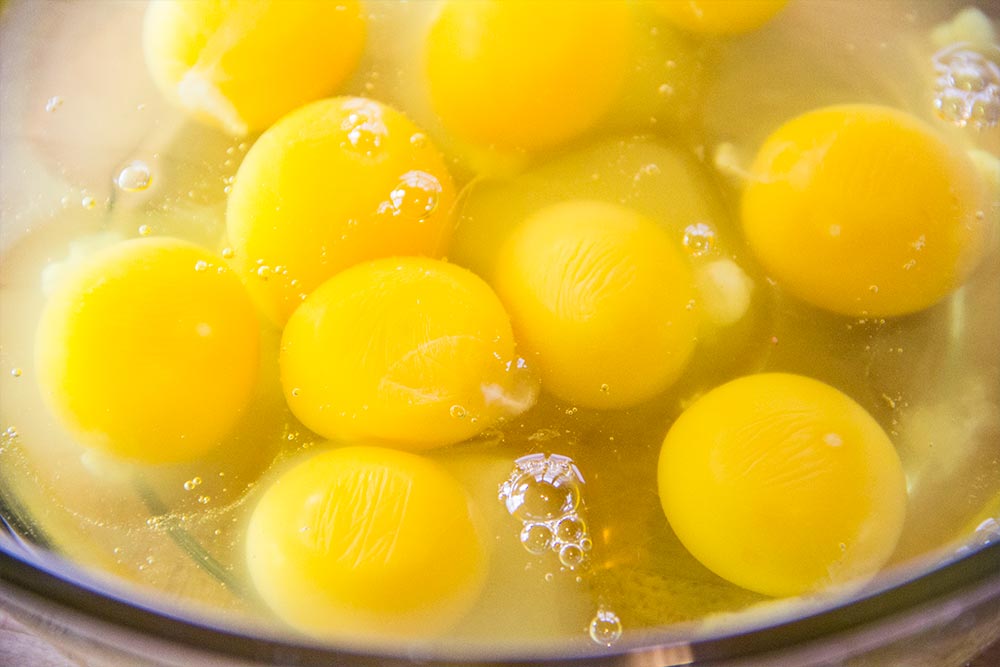
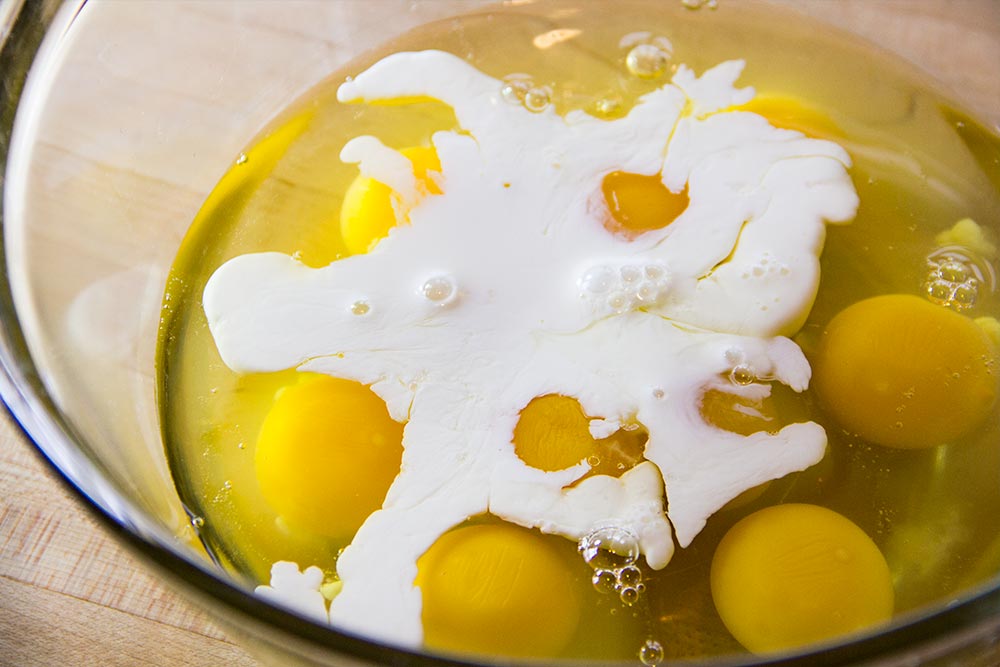

It’s suggested that by adding the salt at this point in the process, it helps to prevent the proteins of the eggs from binding too tightly as they cook. I felt it necessary to tell you that Gordon Ramsay suggests exactly the opposite. He says “…don’t season it. What happens is if you put the salt in now (during the egg mixing stage), it breaks down the eggs. They turn into something very watery.” Here’s the thing – I’ve prepared both recipes using both methods and they both are exquisite. Neither were watery and both tasted wonderfully. If I were to give advice, I’d say that it’s really preference. The benefit of adding the seasoning during the mixing stage is that your result will be a more evenly seasoned scrambled egg. If you season afterward, the seasoning will be more distinct. I enjoy eating the eggs both ways.
Scramble the Ingredients
The trick with this step is to scramble just to the point of ingredient combination and large bubbles. If you see smaller bubbles, it means that you may have over-mixed and you might end up eating tougher scrambled eggs. What you really don’t want to do it but the ingredients into a blender and blend.
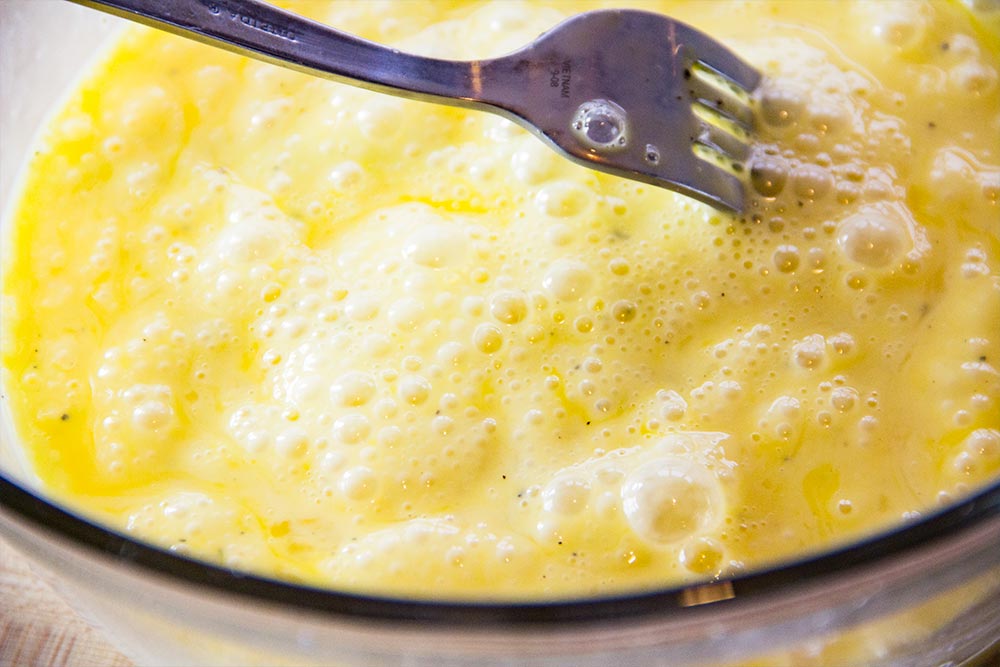
Heat Pan & Add Butter
For this recipe, I’m using my 12″ cast iron skillet. I practiced making these eggs a few times and with the correct heat and fat usage, nothing stuck – ever. It’s really a marvel of nature.
Anyway, whatever kind of skillet you use (except for stainless steel – don’t do that), heat it to medium-high and when it’s hot, add the tablespoon of butter.
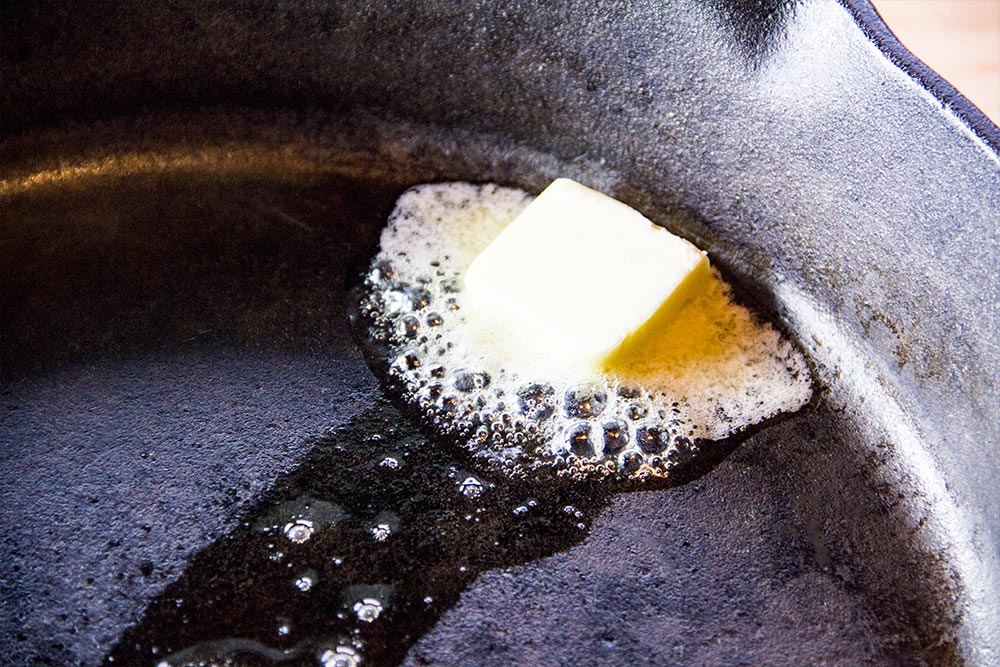
Watch the butter melt just to the point of it disappearing. Be sure to not let it brown at all. Also, be sure to move the pan so the butter coats the entire bottom.

Add Eggs to Skillet & Cook
At this point, you want to add all the scrambled eggs to the hot skillet. These next few steps are critical, so be sure to keep your eye on things.
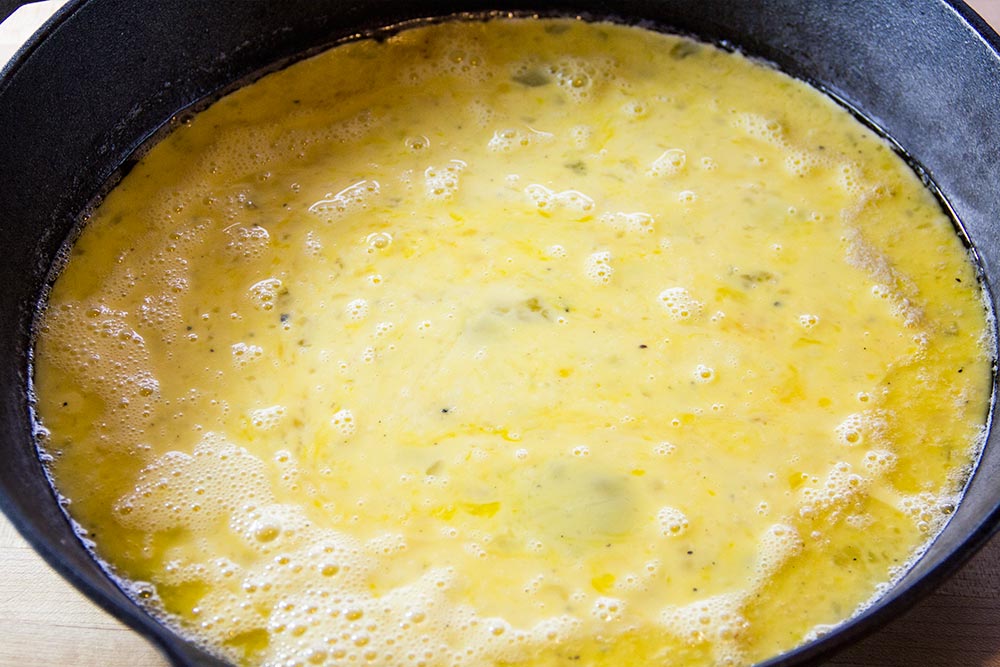
With a rubber spatula, immediately begin scraping the bottom of the pan. The eggs should begin to cook together.
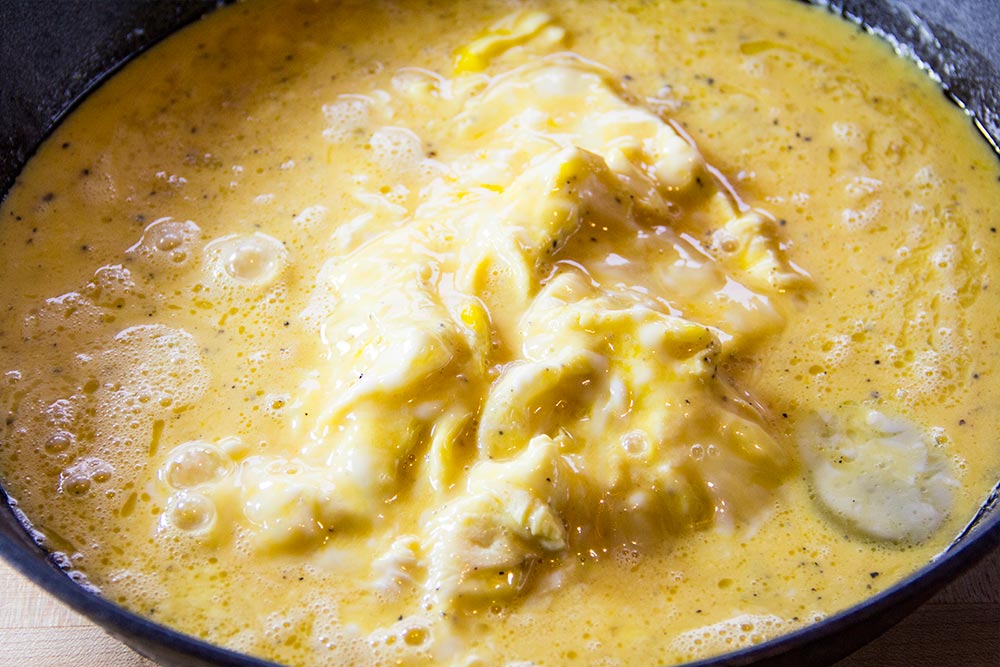
Continue to scrape the bottom and sides of the skillet, non-stop. After just a minute or two, the eggs will begin to hold their shape as you scrape. They’ll look like this.
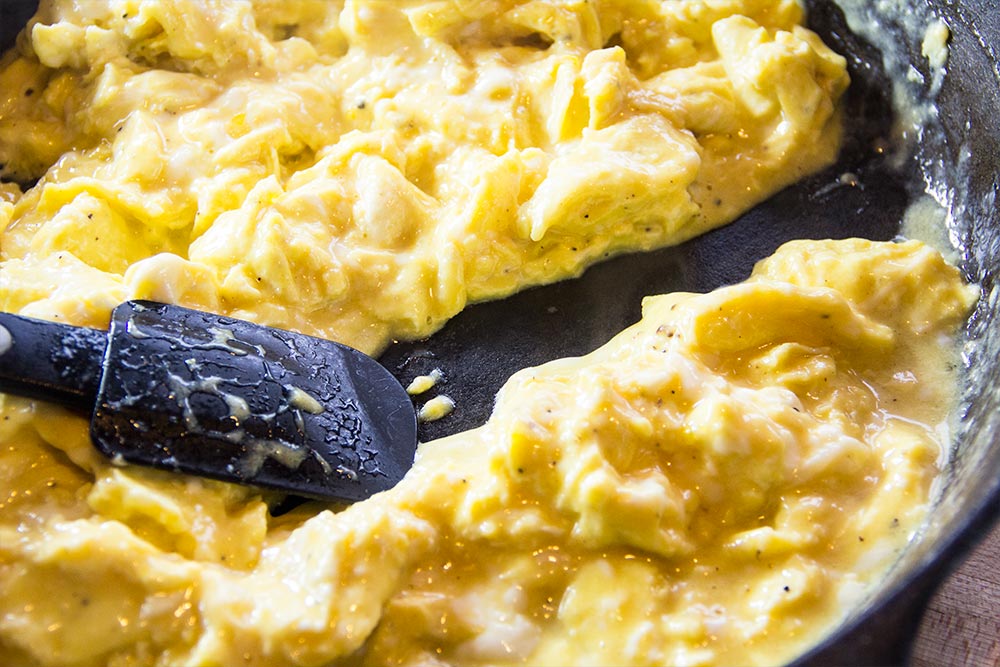
When the eggs look like the above photo and are still very moist, turn the heat to low and continue scraping.
Add Herbs
Just when you turn the heat to low, go ahead and add whichever herb you’ve chosen for this dish. In my case, I chopped up some Italian parsley and tossed it into the almost cooked scrambled eggs. I continued to scrape and fold and here is what the final eggs look like in the skillet.
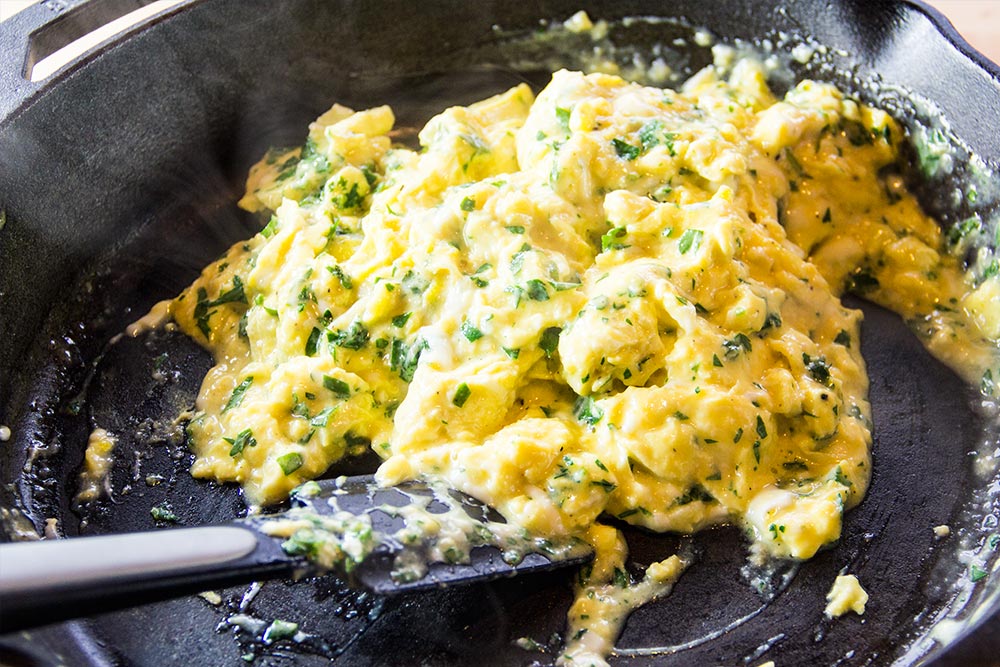
The Final Product
While the eggs still have their glisten, go ahead and remove them from the heat and immediately plate them. I’ve got a photo of what mine look like below. Remember, eat them quickly. Scrambled eggs lose their moisture and heat very fast. You really want to enjoy these – they’re worth it.
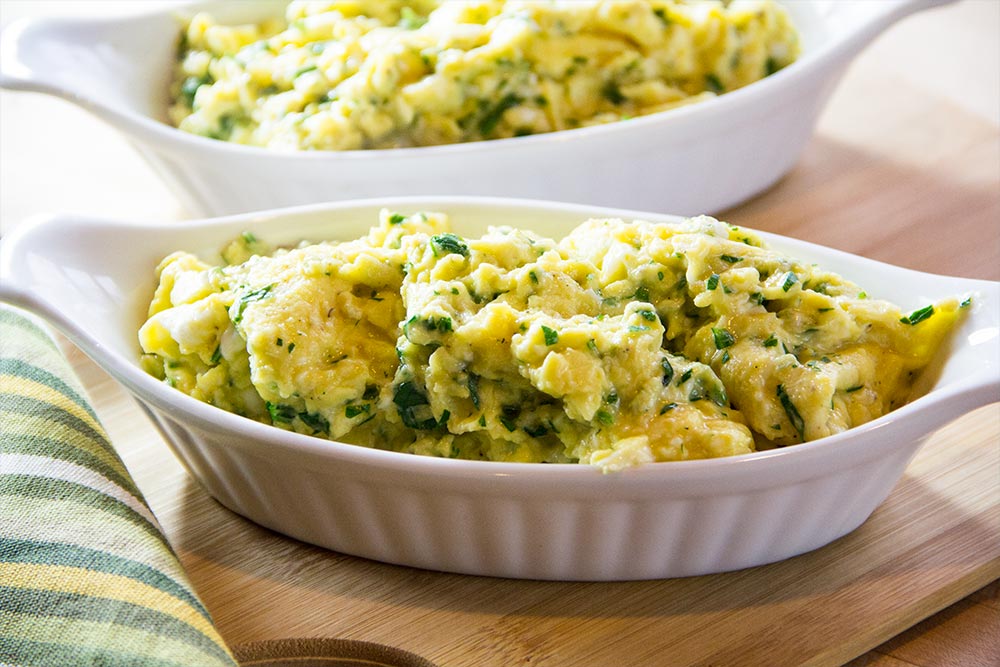
If you’ve enjoyed today’s post and found it helpful, please share it with a friend. Thanks!

Leave a Reply